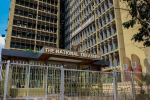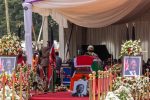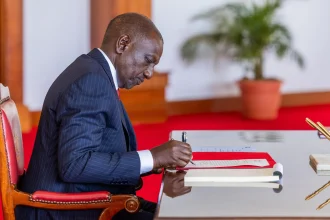In a significant move aimed at enhancing police accountability and transparency, Interior Cabinet Secretary Kipchumba Murkomen on Friday the issued a Policy Directive outlining stringent conditions for the use of force and firearms by the National Police Service (NPS).
The directive emphasises proportionality, necessity, and a strong push for de-escalation tactics, while also introducing the progressive use of technology, including body-worn cameras, to ensure evidentiary integrity in investigations.
The directive aims to standardise and clarify the circumstances under which police officers can resort to force. Notably, it explicitly states that certain provisions related to the use of force (paragraphs 1(c), (d), and (e) of Part B of Schedule 6B of the National Police Service Act) were declared null and void by the High Court in a 2022 petition, underscoring the legal framework guiding this new policy.
A key highlight of Policy Directive No. 1 of 2025 is its forward-thinking approach to technology and transparency.
The directive mandates that the National Police Service “shall promote progressive use of technology including fixed closed circuit television systems (CCTVs), body-worn cameras and other digital evidence capture tools”.
This move is designed to enhance evidential integrity and safeguard investigations into all use of force incidents.
The implementation of bodycams, in particular, is a significant step, as it can provide an objective record of encounters, fostering greater public trust and providing crucial evidence in cases of alleged misconduct or justified use of force.
The directive strictly limits the use of force and firearms, stating that officers may only use them “in self-defence or defence of others against the imminent threat of death or serious injury”.
It further stresses that force must be the “minimum reasonably necessary in the circumstances” and never used as a form of “extrajudicial punishment”.
When force is unavoidable, officers are directed to exercise restraint, minimise damage and injury, preserve human life, and provide immediate medical aid to injured persons.
Furthermore, the policy emphasises de-escalation tactics, defining “de-escalation” as strategies to “reduce the intensity of a potentially violent situation so as to minimise or eliminate the need for the use of force”.
The NPS is directed to conduct regular de-escalation training programs to equip officers with the necessary skills.
The directive requires the NPS to foster a culture of responsibility, encourage officers to account for their actions, and conduct objective reviews and analyses of all “reportable force” incidents.
“Reportable force” is defined as “any application of force that results in or is alleged to have resulted in injury, complaint, or the discharge of a firearm, save for authorised training or sporting activities”.
The Directorate of Criminal Investigations is also tasked with embedding qualified personnel within investigative teams to ensure prompt and impartial inquiries into these incidents.
The directive also addresses training and counselling, requiring officers to receive continuous professional training, including periodic testing in the use of force.
The National Police Service Commission is urged to give special attention to police ethics, mental health, human rights, and alternatives to the use of force.
Counselling services are also to be made available to officers involved in use of force incidents.
While the directive marks a positive step, its effective implementation will be crucial. The success of the bodycam initiative, for instance, will depend on adequate funding, proper maintenance, and clear guidelines on data storage and access.
Nonetheless, Policy Directive No. 1 of 2025 signals a clear commitment from the Kenyan government to a more rights-based and accountable approach to policing, with technology playing an increasingly vital role in achieving that objective.
Recent concerns about police brutality during protests in Kenya have been particularly acute, with significant public outrage and international condemnation. This has been a recurring issue, especially during large-scale demonstrations.
Just days before the issuance of this Policy Directive, on July 7, 2025, Kenya experienced widespread protests during the 35th anniversary of “Saba Saba” Day, a historic march for multi-party democracy.
These protests, which spread across at least 17 counties, reportedly resulted in numerous fatalities and injuries.
The UN Human Rights Office (OHCHR) expressed deep concern over the killings of at least 10 protesters on July 7, citing reports of police using lethal force.
These July 2025 protests followed earlier demonstrations on June 25, 2025, which also turned deadly, with at least 16 people reportedly killed in nationwide rallies against police brutality and government corruption.
The unrest was further fueled by the death of blogger Albert Ojwang in police custody in June 2025, and the fatal shooting of Boniface Kariuki, a street vendor, by a police officer during an anti-police brutality demonstration on June 17, 2025. An officer has since been charged with Kariuki’s murder.
President William Ruto’s strong rhetoric, including reportedly calling for police to “shoot and break the legs” of those found looting or damaging property during protests, has drawn criticism from human rights groups and opposition leaders who deem such orders unconstitutional.
The UN High Commissioner for Human Rights, Volker Türk, has repeatedly called for prompt, thorough, independent, and transparent investigations into all reported killings and alleged human rights violations related to the use of force by law enforcement
Amnesty International Kenya has also highlighted a “failure to hold officers and their commanders accountable for two successive years of police brutality,” leading to “impunity and disrespect for human rights”.
The protests, which initially emerged in June 2024 over proposed tax increases, have evolved into a broader anti-establishment movement against corruption, police brutality, and economic exclusion.
There have also been concerns about the use of anti-terror laws to suppress dissent, with many individuals facing terrorism charges.
Human rights groups have reported an alarming surge in abductions since the protests began, with estimates of over 80 incidents in the past year and dozens still unaccounted for.












